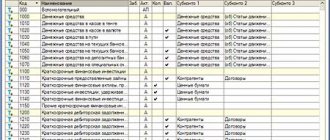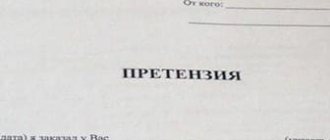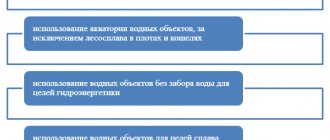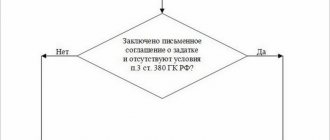Receipt of subsidies: postings
Receipts of subsidies from the budget are reflected in the manner established by the Accounting Regulations “Accounting for State Aid” PBU 13/2000, approved by Order of the Ministry of Finance of the Russian Federation dated October 16, 2000 No. 92n (hereinafter referred to as PBU 13/2000).
The formation in accounting of information about state aid related to the recipient’s activities in the sectors of the economy most affected by the spread of the new coronavirus infection, including in the form of subsidies, is carried out by commercial organizations also in accordance with PBU 13/2000. This state assistance is reflected in the accounting (financial) statements on the basis of analytical accounting (clause 6 of the information of the Ministry of Finance of the Russian Federation No. PZ-14/2020 “On the practice of generating information in accounting in the context of the spread of a new coronavirus infection”).
The company accepts accounting subsidies upon actual receipt of funds or if the following conditions are met (clause 5 of PBU 13/2000):
- there is confidence that the requirements for the provision of state aid by the company will be met. Confirmation may include contracts signed by the company, decisions made and publicly announced, feasibility studies, approved design and estimate documentation, etc.;
- there is confidence that the funds will be received.
State aid funds accepted for accounting are reflected as the occurrence of targeted financing and debt on these funds. As the subsidy is actually received, the corresponding amounts reduce the debt and increase the cash accounts.
If state aid is taken into account as it is actually received, then with the emergence of targeted funding, cash accounting accounts increase (clause 7 of PBU 13/2000).
Accounting records are made in accordance with the instructions approved by Order of the Ministry of Finance of the Russian Federation dated October 31, 2000 No. 94n.
Reflection in the accounting of a company receiving subsidies depends on the method adopted in the accounting policy:
- as confidence emerges in receiving funds from the budget;
- upon actual receipt of money.
The following entries are possible in accounting.
1. The subsidy to finance upcoming expenses is taken into account before they are actually received.
| Operation | Debit | Credit |
| The amount of the allocated subsidy to finance expenses, including capital costs, is reflected | Score 76 | Score 86 |
| Budget funds received | Score 51 | Score 76 |
| Budget funds are used to finance expenses (materials, fixed assets, work, services purchased, wages accrued, etc.) | Score 86 | Score 98-2 |
| Budgetary funds are recognized as part of other income (as depreciation is calculated on fixed assets, materials are released into production, etc.) | Score 98-2 | Score 91-1 |
2. Funds to finance expenses incurred are taken into account before they are actually received.
| Operation | Debit | Credit |
| The amount of the allocated subsidy to finance the expenses incurred, including capital expenses (in the amount of accrued depreciation) is reflected. | Score 76 | Score 86 |
| The amount of the subsidy to finance incurred expenses, including capital expenses (in the amount of accrued depreciation), is recognized as other income | Score 86 | Score 91-1 |
| The amount of budget subsidy received to finance capital costs is reflected (in an amount exceeding accrued depreciation) | Score 86 | Score 98-2 |
| Budget funds received | Score 51 | Score 76 |
3. The subsidy to finance upcoming expenses is taken into account upon their actual receipt
| Operation | Debit | Credit |
| Reflects the amount of budget subsidy received to finance costs | Score 51 | Score 86 |
| Budget funds are used to finance costs (materials, fixed assets, work, services were purchased, wages were accrued, and so on) | Score 86 | Score 98-2 |
| Budgetary funds are recognized as part of other income (as depreciation is accrued on fixed assets and materials are released into production) | Score 98-2 | Score 91-1 |
4. Budgetary funds to finance incurred expenses are taken into account upon their actual receipt
| Operation | Debit | Credit |
| Reflects the amount of budget subsidy received to finance costs | Score 51 | Score 86 |
| The amount of the subsidy to finance incurred expenses, including capital expenses (in the amount of accrued depreciation), is recognized as other income | Score 86 | Score 91-1 |
| The amount of budget subsidy received to finance capital costs is reflected (in an amount exceeding accrued depreciation) | Score 86 | Score 98-2 |
General rules
According to the Agreement with the founder, a budgetary (autonomous) institution may receive the following types of subsidies:
- subsidies for the implementation of state (municipal) tasks (hereinafter referred to as subsidies for the implementation of state tasks);
- subsidies for capital investments in capital construction projects of state (municipal) property and the acquisition of real estate in state (municipal) property (hereinafter referred to as subsidies for capital investments);
- subsidies for other purposes, including grants in the form of subsidies (hereinafter referred to as subsidies for other purposes).
In accordance with clause 54 of the “Revenue” Standard, subsidies for the implementation of government tasks are recognized in accounting as deferred income on the date the right to receive them arises, i.e. on the date of conclusion of the Agreement. A similar rule applies to other types of subsidies presented above, if they are provided on the basis of the return of part of the funds due to failure to comply with the terms of the Agreements (non-use of subsidy funds) (clause 40 of the “Revenue” Standard).
An option when a subsidy is provided without such a condition is to provide a subsidy for another purpose to an autonomous institution that has accounts opened in a commercial bank. According to the conditions, initially in such a situation the autonomous institution must spend its own funds on expenses that will be provided for in the Agreement and provide a report to the founder. Then the founder allocates a subsidy for another purpose to reimburse the expenses incurred by the autonomous institution.
Other situations where, on the basis of the Agreement, it is possible to recognize income in the form of a subsidy as current year income immediately have not yet been established. Therefore, according to the general rule established by the “Revenue” Standard, on the basis of the Agreement concluded with the founder, the institution should reflect deferred income in accounting.
Income of future periods can be recognized as income of the current year on the basis of the following documents:
- for a subsidy for the implementation of a state task - on the basis of the Report on the implementation of the state (municipal) task;
- for other types of subsidies - on the basis of the Report on the fulfillment of the conditions for the provision of a subsidy;
- and (or) information on the results of the use of subsidies - Notice (f. 0504805), generated in order to reflect the financial results on an accrual basis in the absence of the Reports specified in paragraph “1” on the date of reporting;
- and (or) other document provided for in the Agreement.
The Notification (f. 0504805) is generated by a budgetary (autonomous) institution, two copies are sent to the founder. If the founder agrees with the amount specified in the Notice (f. 0504805), then he confirms this by sending a second copy of the completed Notice (f. 0504805) to the institution. To quickly reflect information, we allow the exchange of scanned copies of documents.
Exchange of Notices (f. 0504805) does not exempt the institution from submitting the reports specified in paragraph “1” above. Based on the results of compiling such reports, the amounts indicated earlier in the Notice (f. 0504805) may be updated. Such adjustments are reflected by the founder by sending a Notice (f. 0504805) to the institution receiving the subsidy, indicating the correcting entries. The corresponding accounting entries do not correct the error and are reflected in the financial year in which the decision to adjust the calculations was made.
More on the topic: KVR 247: basic rules of application
After submitting the financial statements, the institution may be required to return part of the subsidy, including as a result of reviewing the Subsidy Reports and identifying misuse (failure to comply with the terms of the subsidy). The corresponding requirements are reflected in the next year as new calculations, without correcting the errors of previous years.
The error of previous years will have to be corrected only if income in the form of a subsidy was recognized incorrectly as income of the current year. For example, accrual was carried out on a cash basis, and not based on the fact that the conditions for providing a subsidy were fulfilled.
Refund of subsidy: postings
If a company no longer meets the conditions for a subsidy, it may be required to return the balance of the funds received or all government assistance. If we are talking about a subsidy received in the current year, then the company must reverse all entries related to the receipt and use of budget funds, with the exception of entries for receiving a subsidy. Refunds are reflected by posting.
| Operation | Debit | Credit |
| Refund of subsidy funds | Score 76 | Accounts 51 (08, 10) |
If a company must return funds received in previous years, the following entries will be required for the funds provided to finance capital investments.
| Operation | Debit | Credit |
| Reflects the debt associated with the return of state aid | Score 86 | Score 76 |
| Targeted financing funds were restored in the amount of accrued depreciation | Score 91-2 | Score 86 |
| Targeted funding was restored for the unwritten off amount of deferred income | Score 98-2 | Score 86 |
Regarding the funds received for current expenses, the following entries are required.
| Operation | Debit | Credit |
| Reflects the debt associated with the return of state aid | Score 86 | Score 76 |
| Targeted funding was restored in the amount of actual expenses incurred | Score 91-2 | Score 86 |
Operations with targeted capital subsidies
Budgetary (autonomous) institutions reflect transactions with these subsidies in the following order*(2):
1. Debit KDB1 5,205 62,561 Credit KDB1 5,401 40,162 - accrual of deferred income for targeted capital subsidies in the amount of the Agreement. 2. Debit KBK2 5,201 11,510 (increase in account 17, analytics code 150, KOSGU 162) Credit KDB1 5,205 62,661 - reflects the receipt of a capital subsidy. 3. Debit KDB1 5,401 40,162 Credit KDB1 5,401 10,162 - recognition of income in the form of a targeted capital subsidy as current year income based on information about the achievement of the conditions for the provision of a subsidy (Notice, Report, other document provided for by the Agreement). 4. Debit KDB1 5,401 40,162 Credit KDB1 5,205 62,661 - decrease in deferred income for targeted capital subsidies based on the amended Agreement and (or) additional Agreement. 5. Formation at the end of the year of settlements for capital subsidies on the basis of the Notice, Report on the fulfillment of the terms of the Agreement (transactions are reflected on the last day of the reporting year, unless otherwise provided by the founder): 5.1. Debit KDB1 5 401 40 162 Credit KBK3 5 303 05 731 - closing settlements in the amount of unused balances of targeted capital subsidies subject to return to the budget in the next year. 5.2. Debit KDB1 5,401 40,162 Credit KDB1 5,205 62,661 - closing settlements in the amount of unused financial support for the subsidy, if it was not transferred to the institution. 5.3. Debit KDB1 5,401 40,162 Credit KDB4 5,303 05,731 - formation of settlements for the unused balance in the presence of obligations assumed at the expense of it and unfulfilled (the need to confirm the need for these funds). When confirming the need, the following entry is reflected: Debit KDB4 5,303 05,831 Credit KDB1 5,401 40,162 5.4. If settlements with the founder under the subsidy are “closed” completely, but the institution still has accounts payable accepted at the expense of the subsidy funds (accepted and unfulfilled monetary obligations), then there is no need to record additional entries. The balance of funds in the personal account in the next year will be used to repay the accepted monetary obligation. 5.5. If, due to a targeted capital subsidy, an advance was paid that was not confirmed by the counterparty’s documents for the reporting year, then the difference between the indicators Dt 5,205,62,000 and Kt 5,401,40,162 is equal to this advance. If a decision is made to return (not confirming the intended nature of the accepted monetary obligations), the operation specified in clause 5.1 is reflected in the next financial year. 6. Debit KBK3 5 303 05 831 Credit KBK2 5 201 11 510 (increase in account 18, analytics code 610, KOSGU 610) - return of the unused balance of the targeted capital subsidy of previous years.
More on the topic: Instructions for budget (accounting) accounting in 2019: overview of changes
Transactions with subsidies for capital investments
Budgetary (autonomous) institutions reflect transactions with these subsidies in the following order*(2):
1. Debit KDB1 6,205 62,561 Credit KDB1 6,401 40,162 - accrual of deferred income for the provision of subsidies for capital investments in the amount of the Agreement. 2. Debit KBK2 6,201 11,510 (increase in account 17, analytics code 150, KOSGU 162) Credit KDB1 6,205 62,661 - reflects the receipt of a capital subsidy. 3. Debit KDB1 6,401 40,162 Credit KDB1 6,401 10,162 - recognition of income in the form of a subsidy for capital investments as current year income based on information about the achievement of the conditions for the provision of a subsidy (Notice, Report, other document provided for by the Agreement). 4. Debit KDB1 6,401 40,162 Credit KDB1 6,205 62,661 - decrease in deferred income for subsidies for capital investments on the basis of the amended Agreement and (or) additional Agreement. 5. Formation at the end of the year of settlements for subsidies for capital investments on the basis of the Notice, Report on the fulfillment of the terms of the Agreement (transactions are reflected on the last day of the reporting year, unless otherwise provided by the founder): 5.1. Debit KDB1 6 401 40 162 Credit KBK3 6 303 05 731 - closing settlements in the amount of unused balances of the subsidy for capital investments, subject to return to the budget in the next year. 5.2. Debit KDB1 6,401 40,162 Credit KDB1 6,205 62,661 - closing settlements in the amount of unused financial support for the subsidy, if it was not transferred to the institution. 5.3. Debit KDB1 6,401 40,162 Credit KDB4 6,303 05,731 - formation of settlements for the unused balance in the presence of obligations assumed at the expense of it and unfulfilled (the need to confirm the need for these funds). When confirming the need, the entry is reflected: Debit KDB4 6,303 05,831 Credit KDB1 6,401 40,162. 5.4. If settlements with the founder under the subsidy are “closed” completely, but the institution still has accounts payable accepted at the expense of the subsidy funds (accepted and unfulfilled monetary obligations), then there is no need to record additional entries. The balance of funds in the personal account in the next year will be used to repay the accepted monetary obligation. 5.5. If, at the expense of a subsidy for capital investments, an advance was paid that was not confirmed by the counterparty’s documents for the reporting year, then the difference between the indicators Dt 6,205,62,000 and Kt 6,401,40,162 is equal to this advance. If a decision is made to return (not confirming the intended nature of the accepted monetary obligations), the operation specified in clause 5.1 is reflected in the next financial year. 6. Debit KBK3 6 303 05 831 Credit KBK2 6 201 11 510 (increase in account 18, analytics code 610, KOSGU 610) - return of the unused balance of the subsidy for capital investments of previous years.
More on the topic: New edition of the law on the contract system and changes in auction documentation
How much do they give?
The rules for receiving subsidies from the federal budget for SMEs affected by coronavirus were approved by Decree of the Government of the Russian Federation of April 24, 2022 No. 576.
The amount of the subsidy depends on the federal minimum wage as of January 1, 2022, amounting to 12,130 rubles, and the number of employees from reports on the form SZV-M for March 2022
For individual entrepreneurs with employees, the number of employees for March increases by one. For individual entrepreneurs without employees, the subsidy is equal to one minimum wage, that is, 12,130 rubles.
The subsidy can be spent on paying salaries for April and May 2020, as well as on other needs related to production activities during the crisis.






